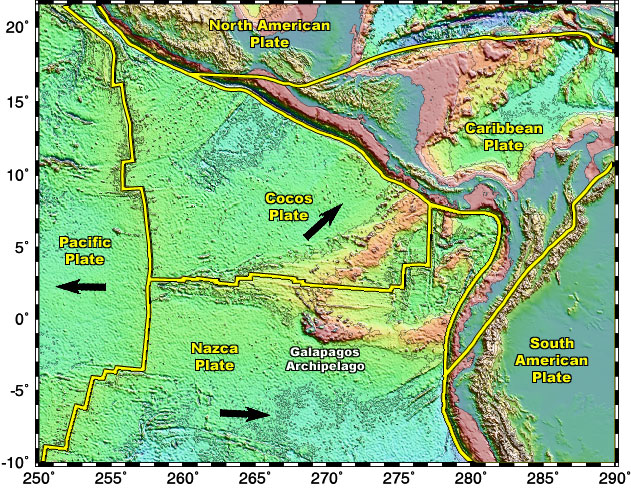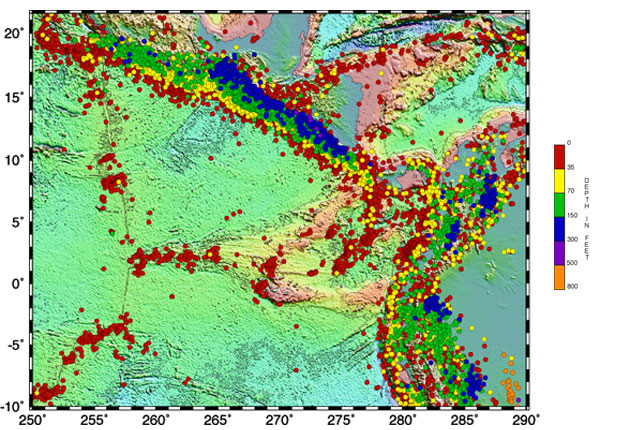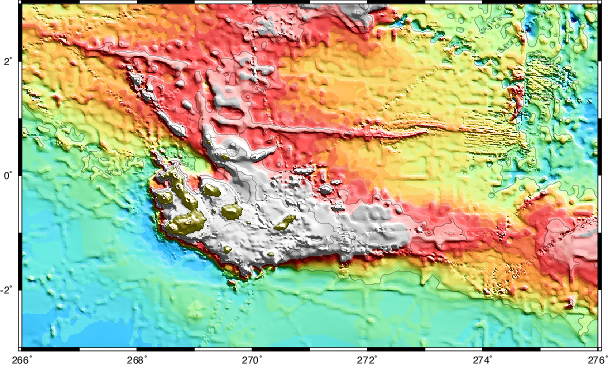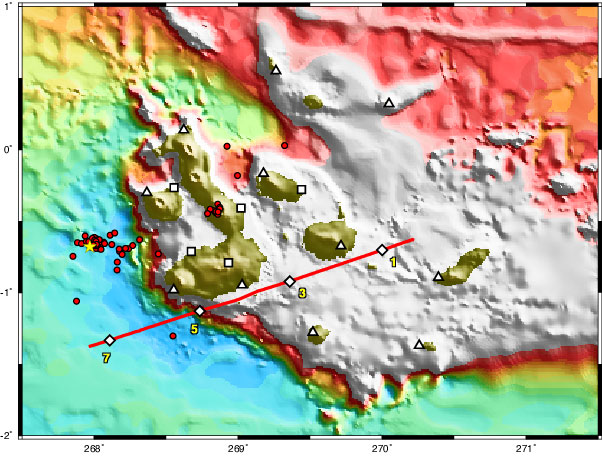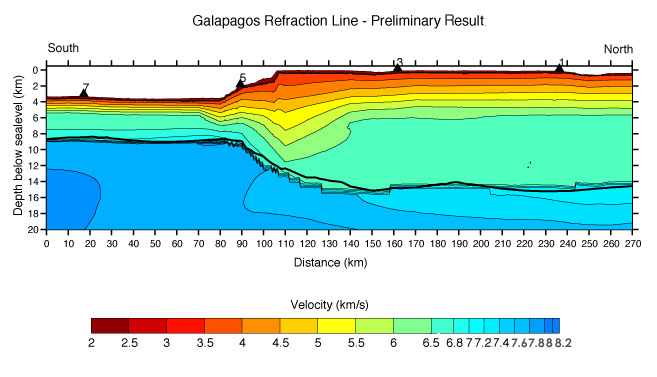The Galapagos Islands are a group of volcanic islands, called a "hotspot". This group of islands are formed by volcanic activity occurring in the middle of one of Earth's tectonic plates. These volcanoes form above the present-day Galapagos hotspot, showing an above sea-level expression of a group of oceanic volcanoes composed of thirteen major islands. The past location of the hotspot can be traced as two ridges on the seafloor, the Cocos and Carnegie ridges, which extend from the Galapagos Archipelago to the Central and South American trenches, where they are subducting into the mantle. These ridges are similar in age and formed when oceanic crust moved over the Galapagos hotspot, leaving a pathway for animals to migrate over time. It is believed that the Galapagos Archipelago has existed continuously for the past fifteen million years. These volcanoes form above a rising plume of hot mantle material which, upon reaching the earth's surface, melts and emits basaltic lava that builds up to form oceanic islands. The upward motion of the mantle plumes pushes on the overlying lithosphere. This, together with magmatic thickening of the crust, is responsible for the Galapagos Platform, a shallow region of the ocean upon which the Galapagos Islands sit.
These islands form near three active tectonic plates, the Cocos, Nazca and Pacific plates. The Galapagos Islands are located on the Nazca plate, which is south of the Cocos plate and east of the Pacific plate. These three plates are separated by two common spreading centers, called "mid-ocean ridges", located between the Cocos and Nazca plates and the Pacific and Nazca plates. Spreading centers are divergent plate boundaries that emit magma to form new oceanic crust. As new crust is made, the Cocos and Nazca plates migrate perpendicular to the direction of the spreading centers until they collide with Central and South America, respectively, and subduct beneath the more buoyant continental-oceanic plates, the Caribbean and South American plates. The mid-ocean ridge between the Pacific and Nazca plate is called the East Pacific Rise and the other ridge, located between the Cocos and Nazca plate, is called the Galapagos Spreading Center. The Galapagos hotspot is only 100 km south of the Galapagos Spreading Center. Interaction between the mantle plume and spreading center can account for the distinct composition of the Galapagos magmas compared to other hotspots. |


